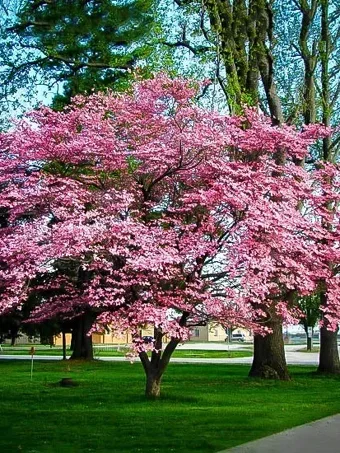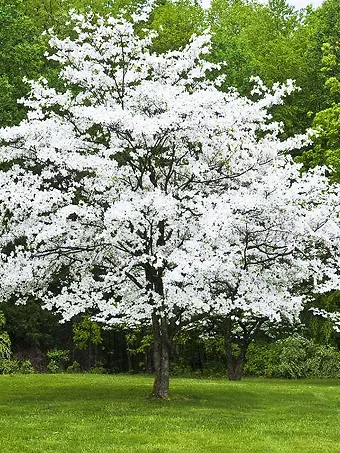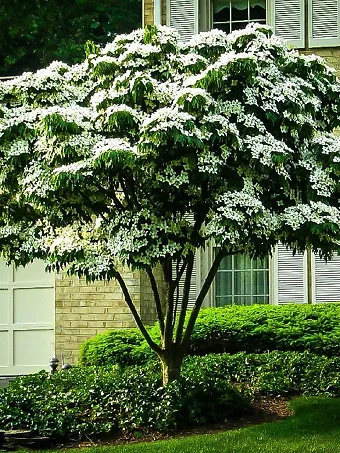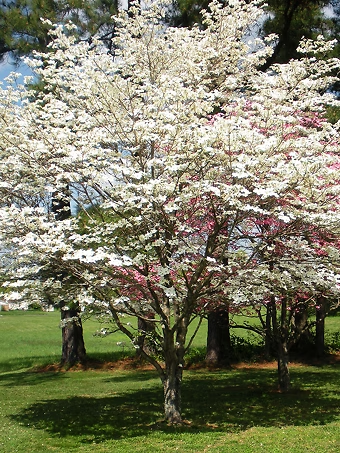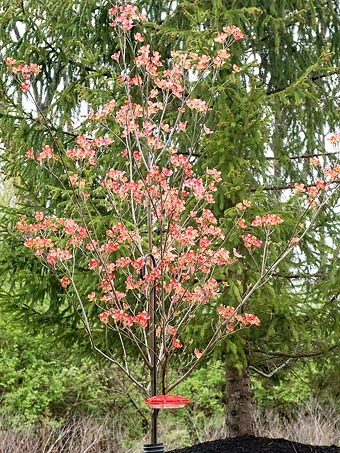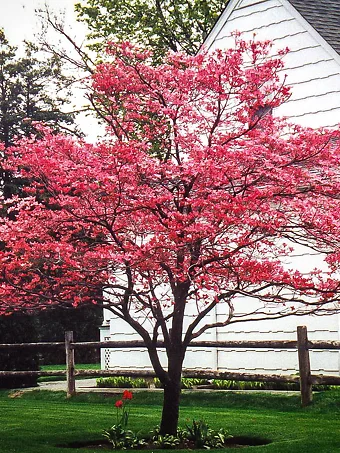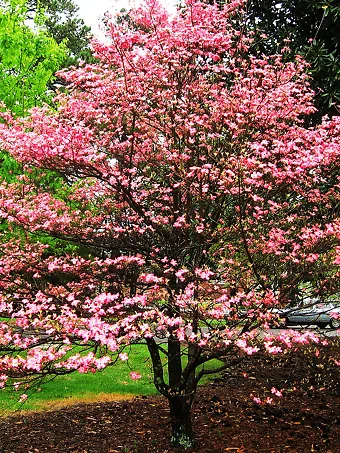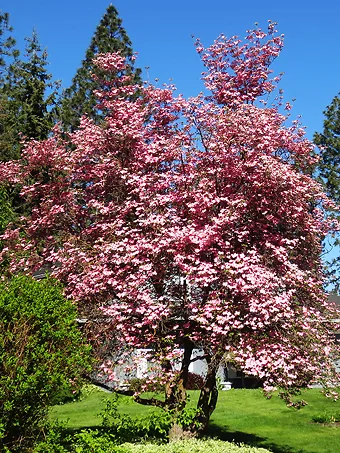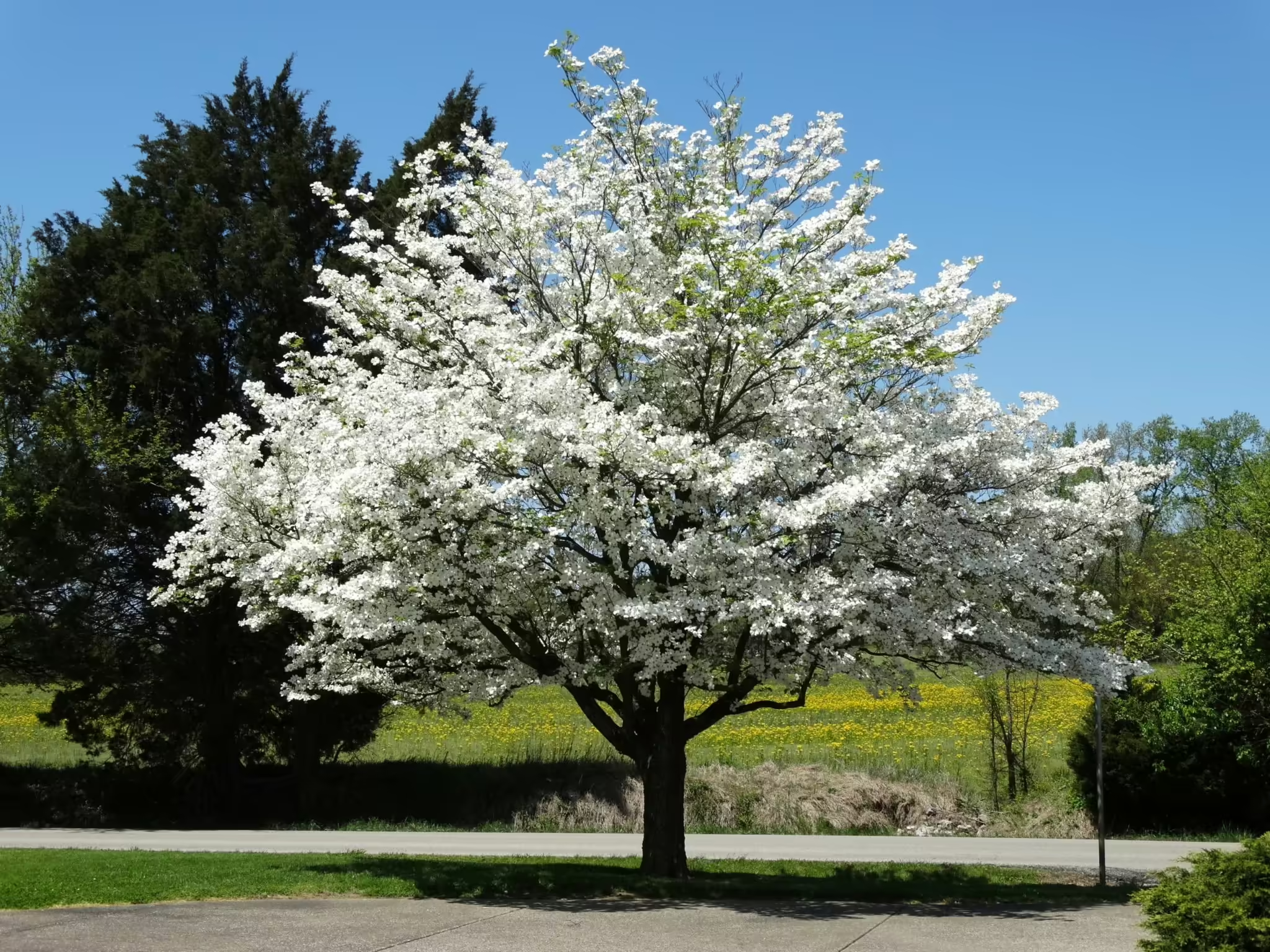
Written by s • Dogwood Tree Facts
Dogwood Tree Facts – Everything You Need to Know
The Dogwood Tree is a beautiful and versatile ornamental tree, well adapted to life in the United States. With over 50 species within the Cornus, or Dogwood, genus, these plants range from deciduous temperate trees and evergreens to shrubs. One of the most popular species is the Flowering Dogwood, the state tree of Virginia, known for its stunning white to light yellow flowers that bloom in spring. Other species, like the Blackfruit Cornel native to California, offer different characteristics and appearances. Regardless of your preferences, there is a Dogwood to suit your needs.
However, there is one crucial aspect to consider when growing Dogwoods: water. While these trees can adapt to various conditions, they do not grow well in semi-arid to arid climates and will need irrigation in these areas. Dogwoods can thrive near river banks or streams but struggle in frequently flooded areas where the soil is consistently saturated. With proper watering, your Dogwood tree will flourish and bring beauty to your landscape.
Best Dogwood Trees
Quick Tips for Growing Dogwood Trees
For more detailed information, read the sections below, but here are some quick tips to keep in mind:
Sunlight – Plant in a partially sunny area with minimal direct afternoon sun. Dappled shade, or partial filtered sun through taller trees, is ideal.
Soil – Plant in well-drained, moist soil that is not overly wet. Dogwoods prefer slightly acidic loam but can adapt to various soil types.
Water – Due to their shallow roots, Dogwoods may dry out quickly. Water the tree at least twice a week in most areas and more during dry spells.
Pruning – Pruning is minimal; remove dead or broken branches in late winter, and prune lightly to maintain the tree’s shape.
The Best Places to Plant the Dogwood
The Dogwood Tree can be particular about its growing conditions. They may not adjust well to significant changes in water and nutrient levels. Dogwoods also emit a strong fragrance, although it’s not altogether unpleasant. The best similarity between a small child and the tree is that your Dogwood will astound you with its beauty, inspiration, and growth.
Dogwoods thrive in dappled shade areas where taller shade trees provide protection from the more direct sun rays. Investigate your property for locations where your new Dogwood will be protected from the sun. Consider planting the Royal Empress or Tulip Poplar, fast-growing shade trees that will provide the dappled shade Dogwoods prefer. Alternatively, you can place the Dogwood in an area where shade is given by a nearby building. However, be cautious as buildings can reflect heat, which can dry out the Dogwood quickly.
The most crucial factor when planting a Dogwood is water access. Whether it’s a natural bubbling brook, high average weekly rainfall, your handheld watering can, or an intricate irrigation system, your Dogwood will need water. Dogwoods have shallow roots, and even with dappled shade, these root systems will dry quickly. Water the tree to a depth of three feet and observe the leaves for signs of over or under-watering. If the leaves are light-green, prickly, or crispy, the tree needs more water. If the leaves are droopy, green-gray, or enlarged, the tree needs less water.
Growth Rate and Mature Height
Depending on the species of Dogwood you plant, you may have a short stout bush or a 25-foot tall tree. The tree displays medium growth, averaging between 13 and 24 inches annually. If carefully treated, a mature Dogwood tree species, such as the Flowering Dogwood, may reach 40 feet in height.
Pests and Diseases
The Dogwood is currently at risk for both fungus and pest infestations, which is why it is important to buy the sapling from an arborist instead of transplanting the tree from the wild. Dogwood anthracnose is a disease caused by the fungus Discula destructiva. For this reason, it can be beneficial to plant your Dogwood in late spring when warm temperatures will kill the fungus, which thrives in cooler, wet weather.
Dogwood powdery mildew has also become a recent major threat to Dogwoods. The mildew, which often causes a whitish-gray powdery film on leaves that are also contorted, is easily treatable with fungicides, such as horticultural oil.
Dogwoods are delicious, so if deer are present in your region, protect the newly planted tree with ‘Deer Away’ or a similar product. Once your tree has reached a suitable height, deer will be unable to reach tasty morsels like leaves and flower buds.
Popular Types Of Dogwood Trees
The Dogwood tree is a beautiful and versatile addition to any landscape. With a wide variety of species to choose from, there is undoubtedly a Dogwood tree that will suit your specific needs and preferences. We offer a range of Dogwood trees for sale, each with unique features and fun facts:
- Arctic Fire Red Twig Dogwood – Vibrant red stems brighten up winter landscapes
- Blue Ray™ Kousa Dogwood – Produces unique bluish-gray fruits in the fall
- Bud’s Yellow Dogwood – Features stunning yellow blooms in the spring
- Cardinal Red Twig Dogwood – Offers brilliant red stems for year-round interest
- Cayenne Silky Dogwood – Known for its eye-catching coral-red stems
- Celestial Shadow Dogwood Tree – Boasts variegated green and yellow leaves
- Cherokee Brave Dogwood Tree – Showcases bold, pink flowers with white centers
- Cherokee Chief Dogwood Tree – Displays large, deep rose-red flowers
- Cherokee Princess Dogwood Tree – Exhibits vibrant white blooms in spring
- Cloud 9 Dogwood – Produces an abundance of fluffy, white flowers
- Constellation Dogwood Tree – Offers disease resistance and large white flowers
- Coral Red Dogwood Tree – Features attractive coral-red branches
- Empress of China Dogwood Tree – Blooms with large, fragrant flowers in late spring
- Flowering Pink Dogwood – Adorned with delicate pink flowers in spring
- Flowering Red Dogwood Tree – Showcases striking red flowers in the spring
- Flowering White Dogwood – Classic variety with iconic white blooms
- Huron® Dogwood – Compact variety ideal for small spaces
- Ivory Halo Red Twig Dogwood – Displays variegated leaves and red stems
- Kelsey’s Dwarf Red Twig Dogwood – Perfect for smaller gardens and containers
- Little Ruby Dogwood – Small variety with ruby-red foliage in the fall
- Midwinter Fire Dogwood – Offers fiery orange and red stems in winter
- Milky Way Kousa Dogwood Tree – Produces abundant white flowers and edible fruits
- Pagoda Dogwood – Known for its distinctive horizontal branching pattern
- Pink Kousa Dogwood Tree – Features stunning pink flowers in late spring
- Prairie Fire Red Twig Dogwood – Boasts red-orange stems for a burst of color
- Red Twig Dogwood – Famous for its red stems, providing winter interest
- Stellar Pink® Dogwood Tree – Showcases soft pink flowers and excellent disease resistance
- Variegated Red Twig Dogwood – Offers red stems and striking variegated foliage
- White Kousa Dogwood Tree – Displays beautiful white blooms in late spring
- Yellow Twig Dogwood – Bright yellow stems add color to winter landscapes
Choosing the right Dogwood for your property means considering what your location has to offer and for what you are looking. A symbiotic relationship, where both your Dogwood benefits from necessary water, sun, and nutrient supplies, and you benefit from the best height, shade, and beauty of the Dogwood, is in everybody’s interests.
Flowering Dogwood Facts
– Dogwoods do not usually require a great deal of fertilization; skimp on the mulch and meter out the water!
– The name Dogwood comes from the word “dog-tree”, which was introduced into English in 1548.
– Dogwood is also thought to derive from “dagwood”, which would involve using the tree’s thin twigs for creating daggers.
– Chaucer used the term “whippletree” to refer to the Dogwood, which is the name for the piece of wood connecting the horse’s harness to the drag pole of a cart.
– Dogwoods have been used medicinally for generations; the bark is rich in tannins, so ground bark or leaves are used to treat pain, fevers, backaches, dizziness, weakness, excessive sweating, uterine bleeding, and incontinence.
[1] Bract – a specialized leaf, usually associated with the reproductive actions of the plant. These “leaves” often sit below the flower or on smaller stems.
In conclusion, the Dogwood tree is a beautiful and versatile addition to any landscape. With over 50 species to choose from, there is undoubtedly a Dogwood tree that will suit your specific needs and preferences. By providing the proper care in terms of sunlight, water, and soil conditions, you can enjoy the stunning blooms and unique characteristics that the Dogwood tree has to offer.
Planting Your Dogwood Tree
When planting your Dogwood tree, choose a spot that offers dappled sunlight and has well-draining, slightly acidic soil. Dig a hole twice as wide as the root ball and just as deep, ensuring that the tree’s root collar is slightly above the soil line. Backfill the hole with a mixture of native soil and organic material, such as compost. Water the tree thoroughly and apply a layer of mulch to help retain moisture and regulate soil temperature.
Summary
Dogwood trees are a popular choice for ornamental landscaping due to their stunning spring blooms, attractive foliage, and colorful fall displays. By understanding the specific needs of your chosen Dogwood species and providing the appropriate care, you can enjoy the many benefits of these beautiful trees for years to come. Whether you are looking for a small, flowering accent tree or a larger shade provider, there is a Dogwood tree that will be a perfect fit for your landscape.
